What is this wrap on my pet's leg?
Quick answer: If your pet is discharged with a “band-aid” wrap on the leg where an IV catheter had been, it is critically important to remove the wrap or the foot will swell. It may generally be removed 2-4 hours after the IV catheter has been pulled.
More detail: Your pet either had blood drawn, received an IV (intravenous) injection, or had an IV catheter placed for administration of medications and fluids. These are most commonly in the cephalic vein in the "forearm," just above the wrist; or the saphenous vein, just above the tarsus.
An IV catheter is generally removed shortly before a pet goes home. To prevent bleeding from the site of the catheter removal, a "band-aid"-type wrap is placed using cotton or gauze against the skin, and a self-adherent bandage material, such as Vetwrap or Co-Flex, is placed to hold the cotton or gauze in place and to apply some pressure to the site to allow it to clot.
The wrap should be removed 2-4 hours after the IV catheter was removed, or 2-4 hours from the time your pet was discharged. If you do not remove the wrap in a timely fashion, continued pressure may result in venous occlusion (obstruction to passage of blood back to the upper body through the vein) that may cause the foot to swell; in severe cases, damage can occur that could result in loss of skin, tendons, pads on the foot, nails, whole digits, or even an entire limb.
If your pet is not already wearing an Elizabethan Collar (E-Collar; also referred to as a lampshade, or "cone of shame") from a surgery, you should be sure your pet does not lick or chew at the site wear the catheter had been. Saliva (and the abrasion of licking) can dissolve clots and can cause the site to bleed. Additionally, the bacteria in your pet's mouth could infect the site, causing infection which could potentially spread into your pet's bloodstream and cause life-threatening infection.
If your pet is licking at the site, contact your veterinarian and obtain an E-Collar. If the site is red, hot, swollen, painful, or bleeding, contact your veterinarian to advice on treatment.

